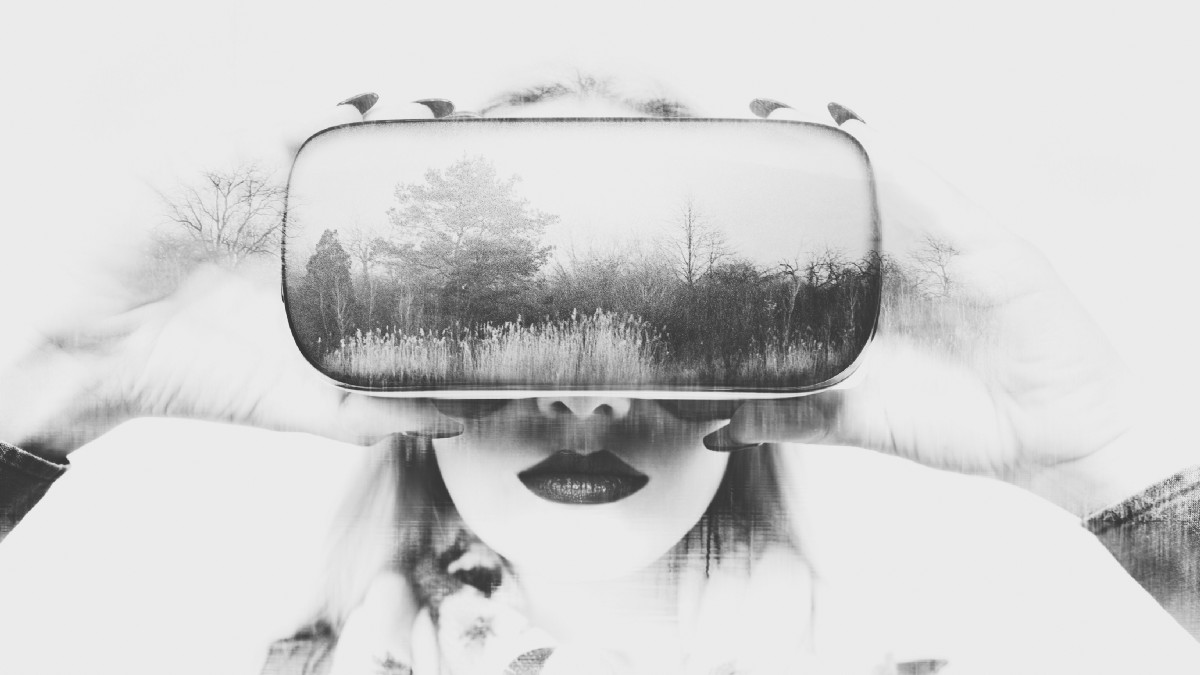
Augmented reality is all around us — you just have to know where to look. Virtual reality, however, is a completely different matter. They should never be used interchangeably.
You know what really grinds my gears? People using AR and VR interchangeably. In almost every case, it’s a strong indicator that the person opening their mouth doesn’t really know what they’re talking about. Laziness in mass-media language is no excuse. AR and VR are completely different and should be treated as such.
Virtual reality is binary
There’s a time and a place for virtual reality, but the technology has a significant challenge: There’s no “thin edge of the wedge” to ease you into VR.

The main problem with VR is that it’s binary. You’re either inside the virtual world — to the exclusion of everything else around you — or you aren’t.
If that’s your purpose when venturing into an alternate reality, then it’s really effective. For immersive gaming, for example, that’s exactly what you want — to be wholly involved in the virtual world, with zero distractions from real life.
VR is a substantially different experience from augmented realities. By being exclusionary, the barrier to entry is huge. More importantly, there are very few real-life things to which we can compare it. In my opinion, there’s only one predicate experience to virtual reality: dreaming, which is also a completely immersive, autonomous experience.
That doesn’t mean VR is bad or boring, but as an investor focused on hardware, to me, the opportunities appear to be limited — although, of course, I’d be delighted to be proven wrong. Content production , on the other hand — the creation of content to be consumed in virtual reality — will almost certainly see several billion-dollar VR content companies. After we manage to convince consumers that buying a VR rig is a sensible way to spend money, that is.
Augmented reality is everywhere.
Augmented reality is a whole different ball game. If we take a wide-angle view of what “augmented reality” really is, it’s an enhanced version of the world around us. These types of experiences — real life overlaid with additional information, data, or entertainment — have become so common in our everyday lives that we barely notice them anymore.
To date, few of us are walking around with a pair of glasses that can project information straight onto our retinas, but unlike VR, AR has a lot of comparable experiences: It is everything but binary.

Whenever you drive a car, you’re used to seeing an instrument cluster readout of what’s going on. Your speed, the distance you’ve driven, and indication lights that show you what’s going on with your vehicle are a rudimentary form of augmented reality: The additional information available to you makes driving a car very different from going for a run or a bike ride, for example. Some cars even have heads-up displays that project information directly on your windshield, which in concept is a small step closer to “overlaying” information over the “real world” you can see through your windshield.

There are tons of other examples of “augmented” experiences that are so commonplace we rarely even notice them anymore. Riding in an elevator and seeing which floor is up next. Watching the news with stock tickers and headlines scrolling along the bottom. Playing a video game with a “life” and “ammo” dials along the bottom of the screen. Watching the progress bar inch across your screen as you watch a video on YouTube. Time moves for us all, and arguably, wearing a wristwatch is a way of augmenting your experience of time. Add smart-watch capabilities, with step-counting and notification features, and you’re strolling even deeper into an augmented reality world.
The media narrative conflates VR and AR experiences, implicitly assuming that augmented reality involves wearing Google Glass, Magic Leap, or Hololens devices. Those are undeniably AR experiences, but the beauty of AR is that it’s possible to dip your toe into the augmented reality universe, without having to commit to wearing anything on your face.
AR/VR and barriers to usefulness

In the Virtual Reality world, the headset war is raging, but it’s probably a safe bet that the battle lines have been drawn. Rift and Vive have the premium market. In the mid-range, the consoles will undoubtedly gobble up a lot of market share, with PlayStation VR leading the charge. Smartphone manufacturers have the entry-level VR experience segment sown up with devices like the Daydream and Gear VR. All of this is to say that investors like Bolt, investing in VR hardware at the pre-seed and seed stage, rarely see huge opportunities come our way.
As discussed☝️, augmented reality has the benefit of having lighter-weight experiences. Avoiding the requirement of full immersion allows for the development of a ton of meaningful AR experiences that can be created on a limited R&D budget, while leaving the potential for a huge upside. In other words, AR products are the perfect addition to a venture capital portfolio.
You’ll be unsurprised to learn that at Bolt, we love AR in the broader sense of the word. Our portfolio company Machine Metrics is a great example: Adding a layer of data on top of CNC manufacturing processes to take the guesswork out of manufacturing is a great use case for augmented reality.
By all means, pitch us your awesome ideas — but let’s agree on something: Don’t mention AR and VR in the same sentence again. Deal?
Bolt invests at the intersection of the digital and physical world.